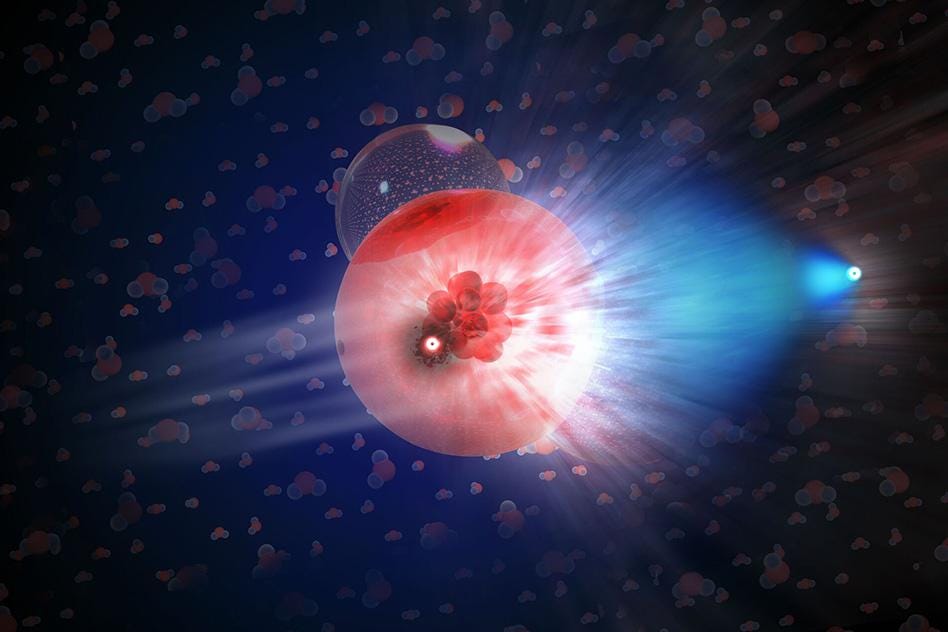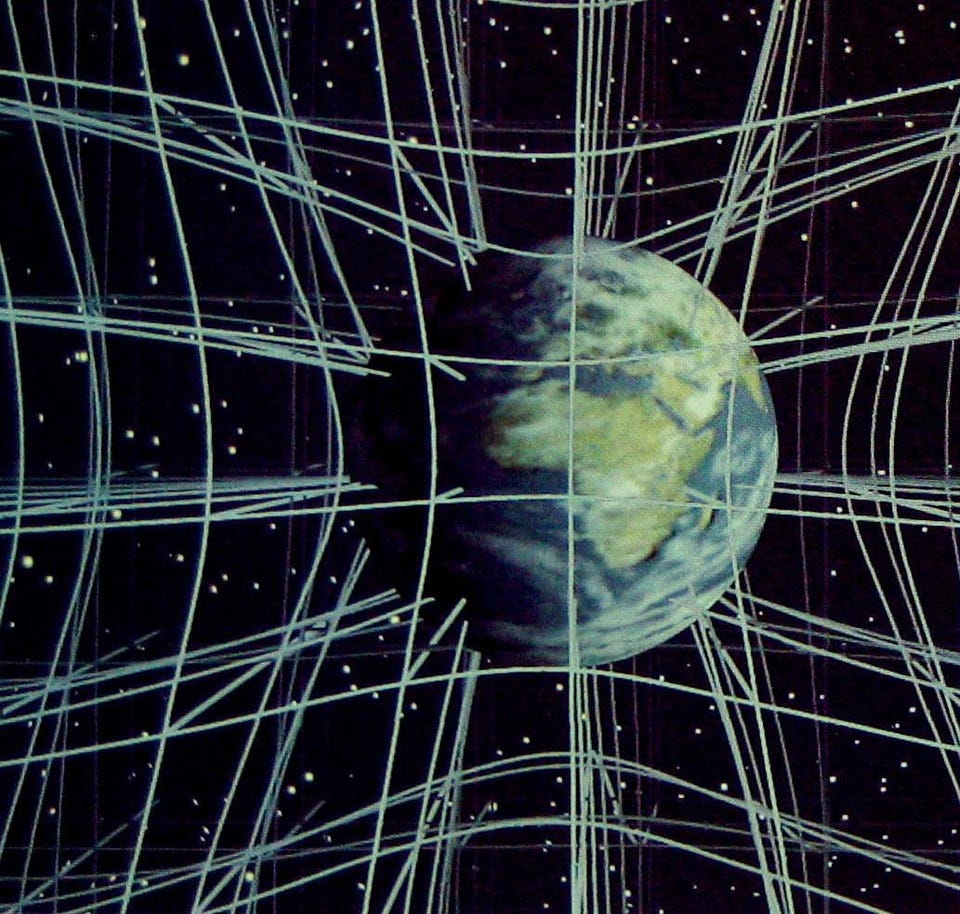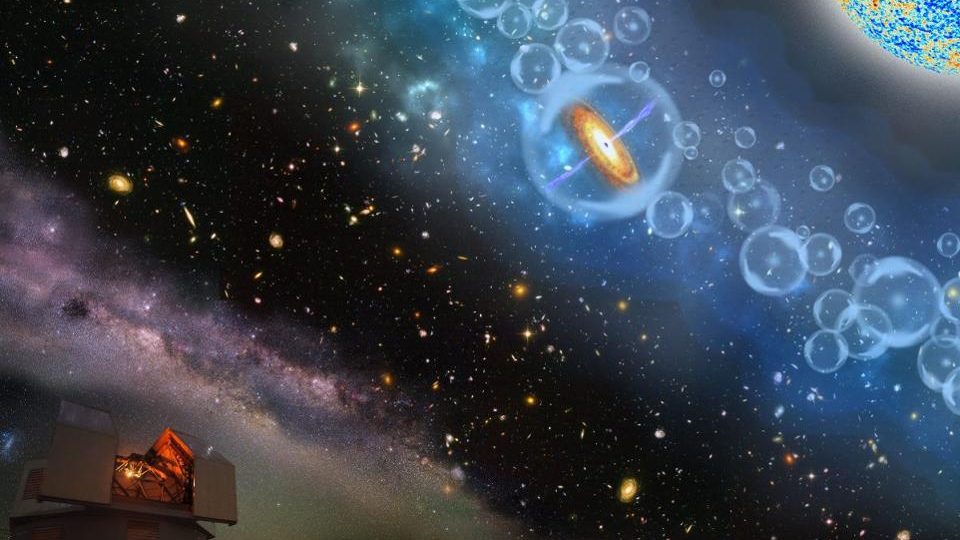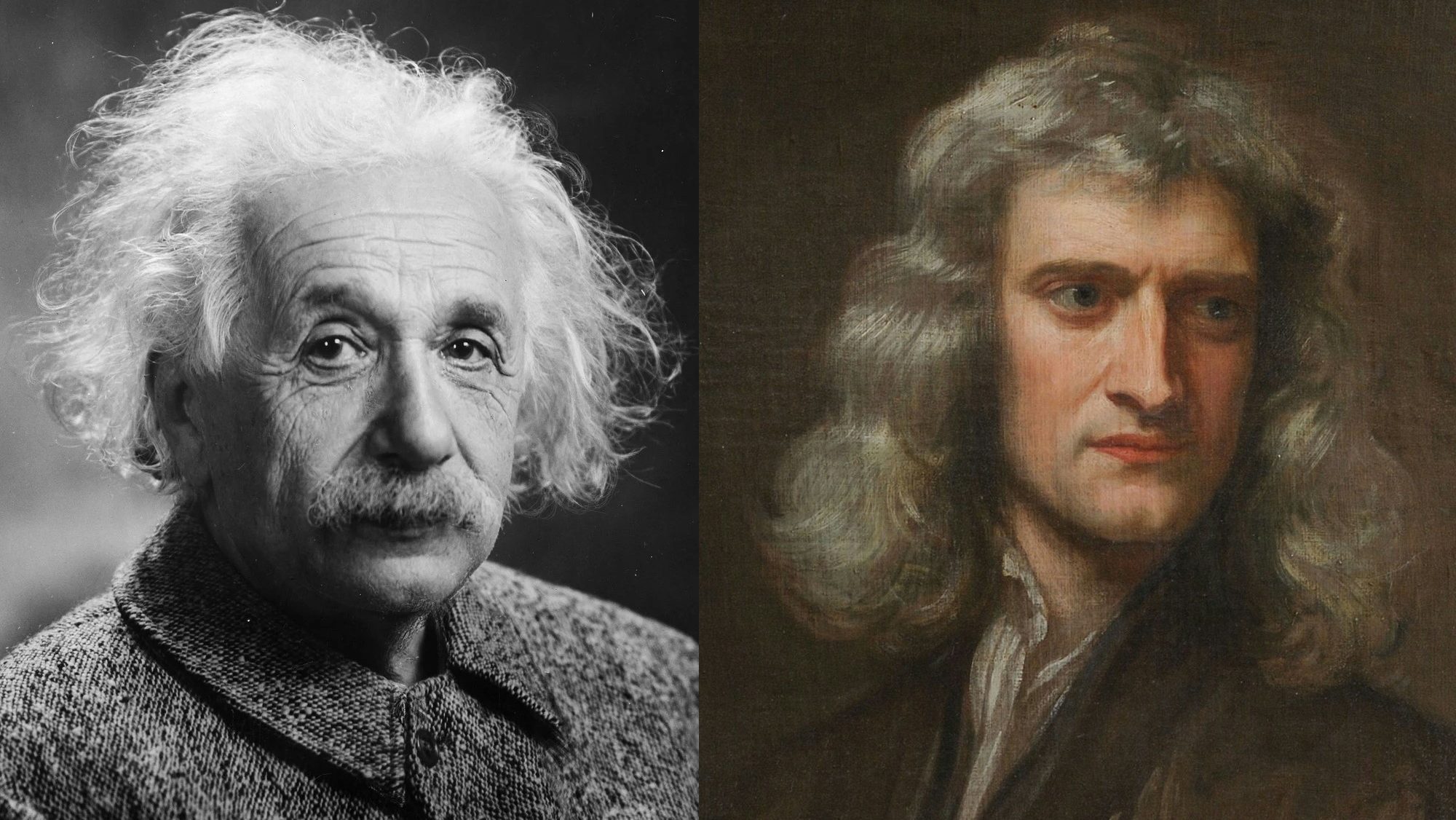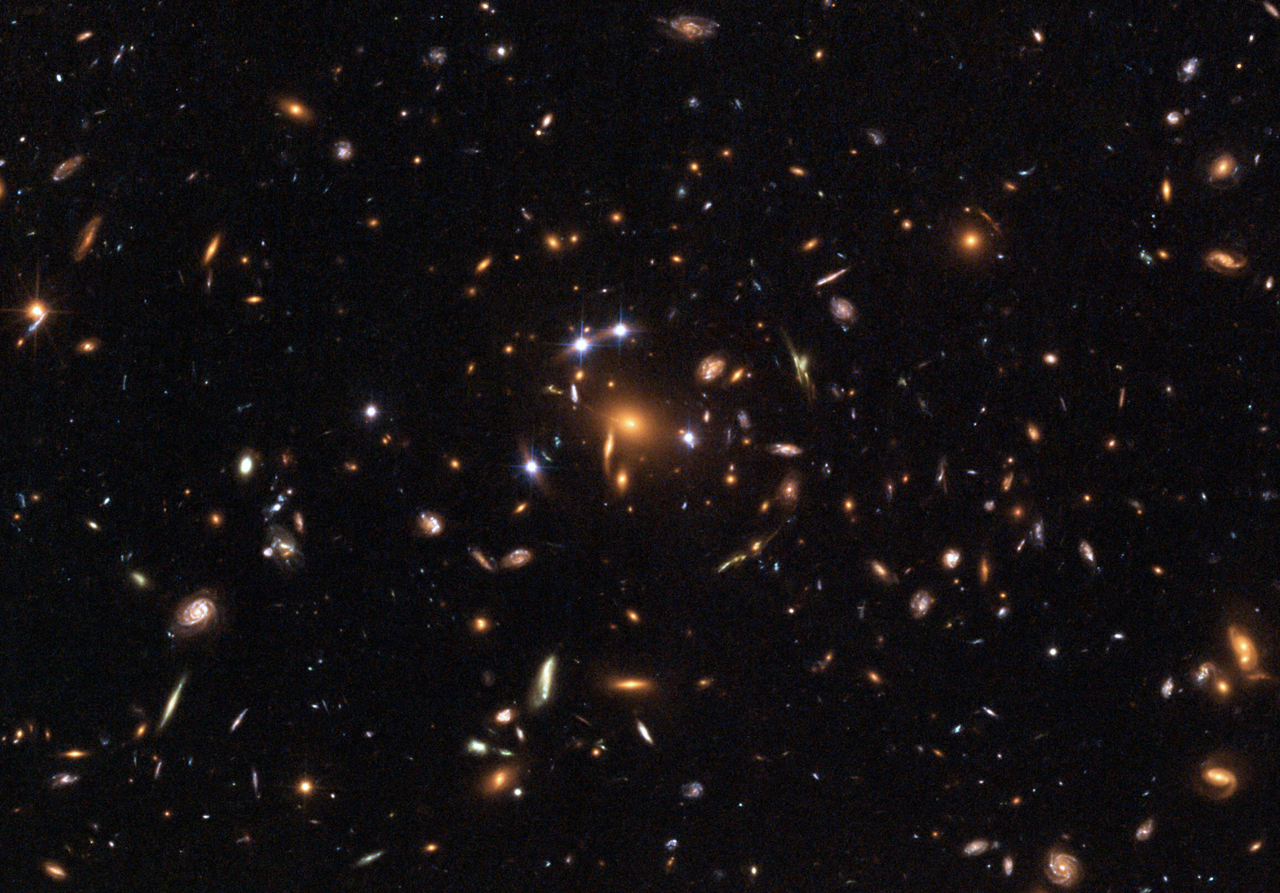Ask Ethan: Why can’t dark matter be made of light?
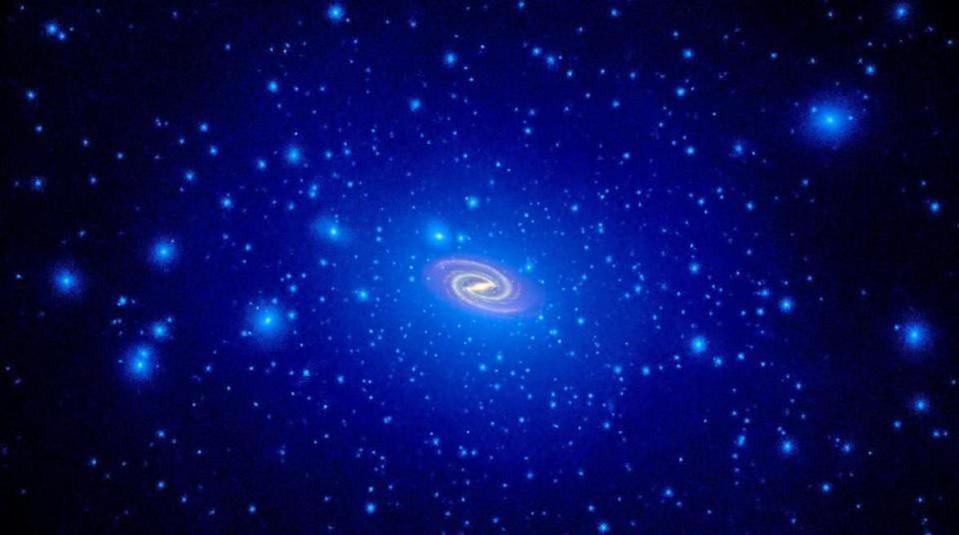
- Based on a whole suite of cosmic evidence, from a variety of independent sources, observables, and cosmic scales, we’re certain that there’s more going on with the “stuff” in our Universe than normal matter, alone, can explain.
- The dark matter puzzle has many fascinating options, but most of the scientific work is focused on one particular class of hypothetical solutions: cold, collisionless, massive particles.
- What about the possibility that this “missing mass” is actually light, or at least some other form of massless radiation? After all, if E = mc² is right, shouldn’t light gravitate, too?
Although the “dark matter problem,” as it’s known today, is one of the biggest cosmic mysteries out there, this wasn’t how we always conceived of the issue. We knew, from objects we had observed, how much light was coming from them. From what we understand about astrophysics — how stars work, how gas, dust, planets, plasmas, black holes, etc., are distributed, and from what we could observe across the electromagnetic spectrum — we could infer how much atom-based matter was present. We also knew, from gravitation, how much total mass must be present in objects like galaxies and galaxy clusters. The mismatch, originally, was known as the “missing mass” problem, as the gravity is clearly there, but the matter is what’s missing.
Well, what if it’s not matter, but radiation instead? That’s the idea put forth by Chris S., who wonders:
“Have you written a piece on why the entirety of the photons in the universe cannot be our elusive dark matter? If E=mc² and photons are equivalent to a certain amount of mass, why can’t we simply say that they make up the sort of matrix or “ether” of dark matter?”
It’s an excellent question and an idea worth considering. As it turns out, radiation doesn’t quite work, but the reason why is both fascinating and educational. Let’s dive in!

The very first piece of evidence that something more than “normal matter” is required to explain what we see dates all the way back to the 1930s. This was before we could measure how galaxies rotated, before we understood our Universe as arising from a hot, dense, uniform early state, and before we understood what consequences would arise from a hot Big Bang, like
- a leftover glow of radiation permeating the Universe,
- the gradual formation of gravity-driven large-scale cosmic structure,
- and the initial abundance of the elements formed via nuclear fusion during the early history of the Universe.
But we did still know how stars worked, and we did still know how gravitation worked. What we were able to do was look at how galaxies were moving — at least along our line-of-sight — within a massive galaxy cluster. By measuring the light coming from these galaxies, we could infer how much matter existed in the form of stars. By measuring how fast these galaxies were moving relative to one another, we could infer (from the virial theorem, or from the simple condition that the cluster be bound, and not in the process of flying apart) how much mass, or total energy, was in them.
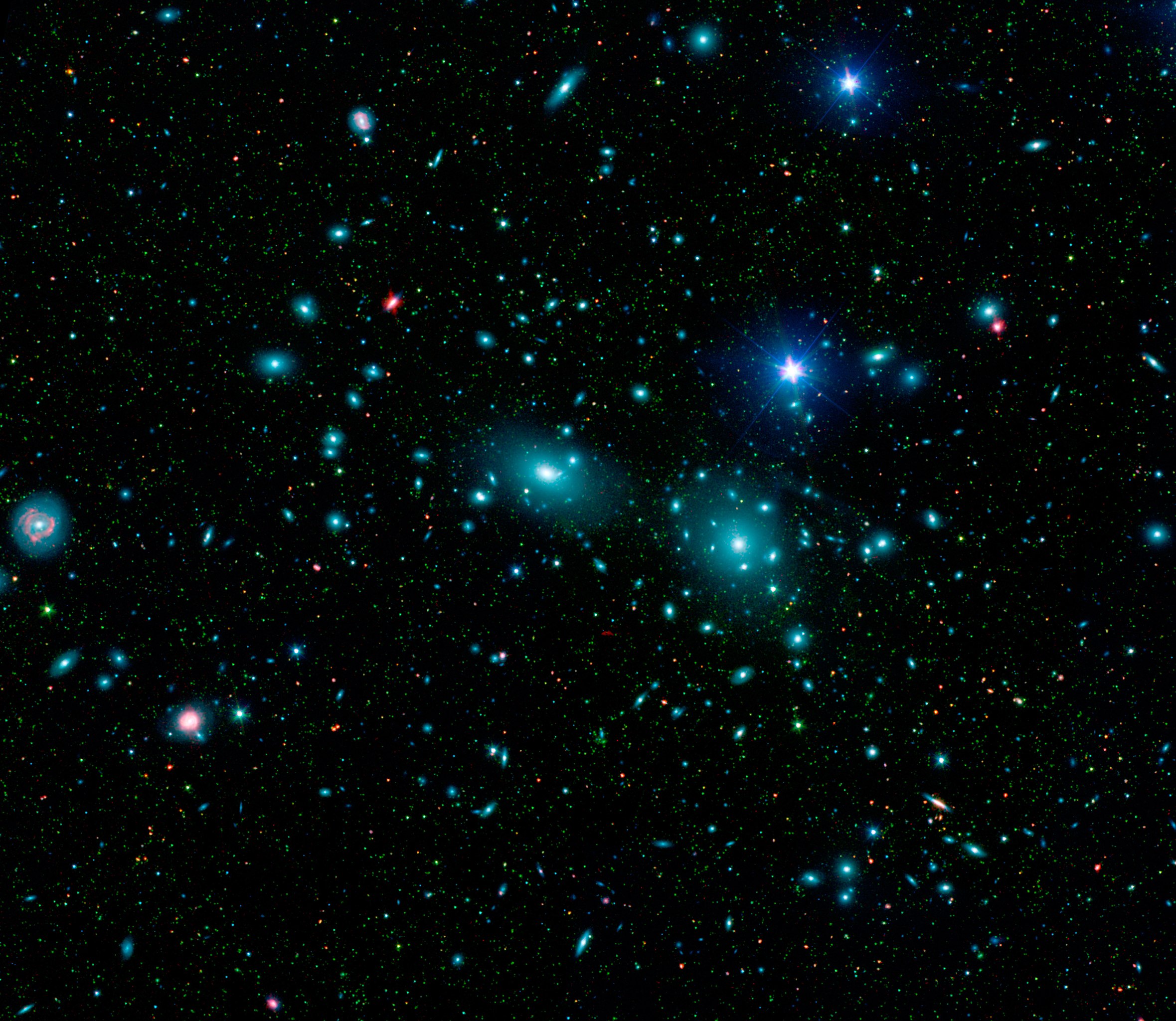
Not only did they fail to match up, but the mismatch was staggering: there was about ~160 times more mass (or energy) required to keep these galaxy clusters gravitationally bound than was present in the form of stars!
But — and perhaps this is the most remarkable part — almost nobody seemed to care. Many of the top astronomers and astrophysicists at the time simply asserted, “Well, there are lots of additional places that matter could be hiding, like planets, dust, and gas, so don’t worry about this mismatch. I’m sure it will all add up when we account for it.”
Unfortunately for us all, we didn’t pursue this further as a community until the 1970s, when the evidence from rotating galaxies clearly indicated the same problem on a different scale. If we had, we could have used our knowledge about:
- how the variety of stars that exist, and how they differ from the Sun’s luminosity-to-mass ratio, reduced this from a 160-to-1 problem to a 50-to-1 problem,
- how the presence of gases and plasmas, as revealed by a variety of observations of both emission and absorption features in various wavelengths of light, reduced this from a 50-to-1 problem to a ~5-to-1 or 6-to-1 problem,
- and how the presence of planets, dust, and black holes were insignificant.

In other words, the “missing mass” problem — even if we only looked at galaxy clusters and the physics/astrophysics inside them alone — really is a problem that normal matter alone cannot resolve. Since that time, we’ve even been able to measure the total amount of normal, atom-based matter in the Universe, based on the physics of nuclear fusion, the conditions during the hot Big Bang, the interactions between protons, neutrons, neutrinos, electrons, and photons, and also our measurements of the most pristine gas clouds ever discovered.
The result is that only ~5% of the total amount of energy in the Universe is locked up in the form of normal matter: not nearly enough to account for the total amount of gravitation we see the various objects in the Universe experiencing.
So, what happens if we try to add additional amounts of photons to the Universe? What happens if we add large amounts of energy in the form of photons, enough to make up for the missing gravitational deficit that must be there? It’s an interesting idea, made possible because of Einstein’s famous equation, E=mc², which tells us that even though photons don’t have a rest mass, they have a “mass equivalent” owing to the energy in each photon; their effective mass that contributes to gravitation is given by m=E/c².
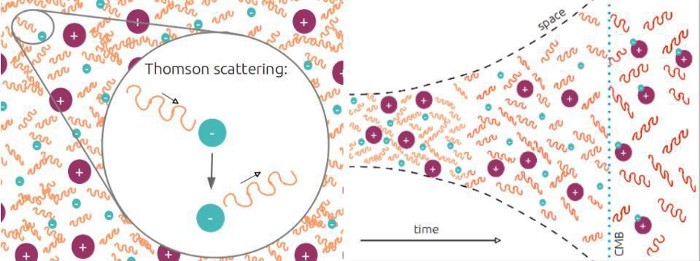
There are some problems that arise immediately, teaching us not only that this scenario fails us, but more importantly, shows us how this scenario doesn’t work.
- First off, if you added enough energy in the form of photons to keep galaxy clusters gravitationally bound, you’d find that — because photons must always move at the speed of light — the only way you’d be able to keep photons from streaming out of your galaxy clusters would be to have them fall into a black hole. This would add to the rest mass of a black hole’s singularity, but at the cost of destroying the photons themselves. Otherwise, they’d simply escape in short order, and the cluster would dissociate.
- Second, if you added additional photons to increase the energy budget in photons (a form of radiation) in the Universe, you’d run into a tremendous problem: the energy in photons decreases, rapidly, relative to the energy in matter. Yes, matter and radiation are both made of quanta, and the number of quanta per unit volume of space decreases as the Universe expands. But for radiation, like photons, the individual energy of each quantum is determined by its wavelength, and that wavelength also stretches as the Universe expands. In other words, the energy in the Universe in the form of radiation decreases faster than the energy in the form of matter, and so if radiation were responsible for additional gravitational effects, those effects would decrease over time as the Universe ages, in conflict with observations.
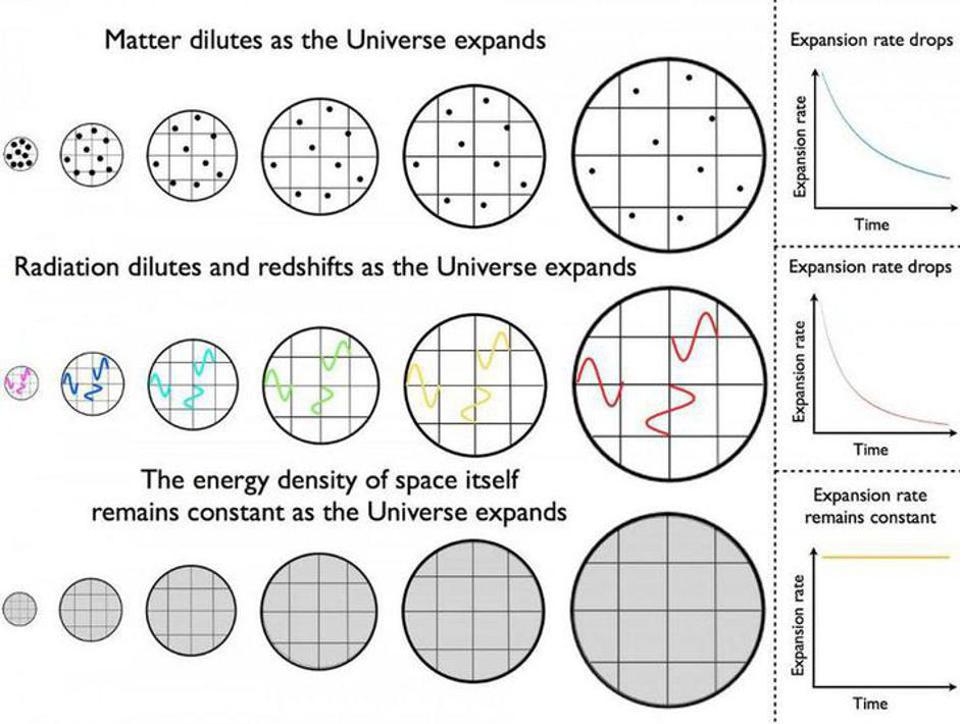
- And third, and perhaps most importantly, if you had additional energy in the form of photons early on in the Universe, it would completely alter the abundance of the light elements, which is robustly observed and stringently constrained. We can tell, with extremely small uncertainties, that there were about 1.5 billion photons for every baryon (proton or neutron) back when the Universe was just a few minutes old, and we observe that same corresponding primordial photon-and-baryon density today when we look at the Universe. Adding more photons, and more photon energy, would ruin this.
So it’s pretty clear that, if there were more photons (or more photon energy) in the Universe, we would have noticed, and a lot of things that we’ve measured very precisely would’ve yielded very different results. But thinking about these three factors can take us much, much farther than simply the conclusion that whatever dark matter is, it can’t be the humble photon. There are many other lessons that we can learn. Here are a few of them.
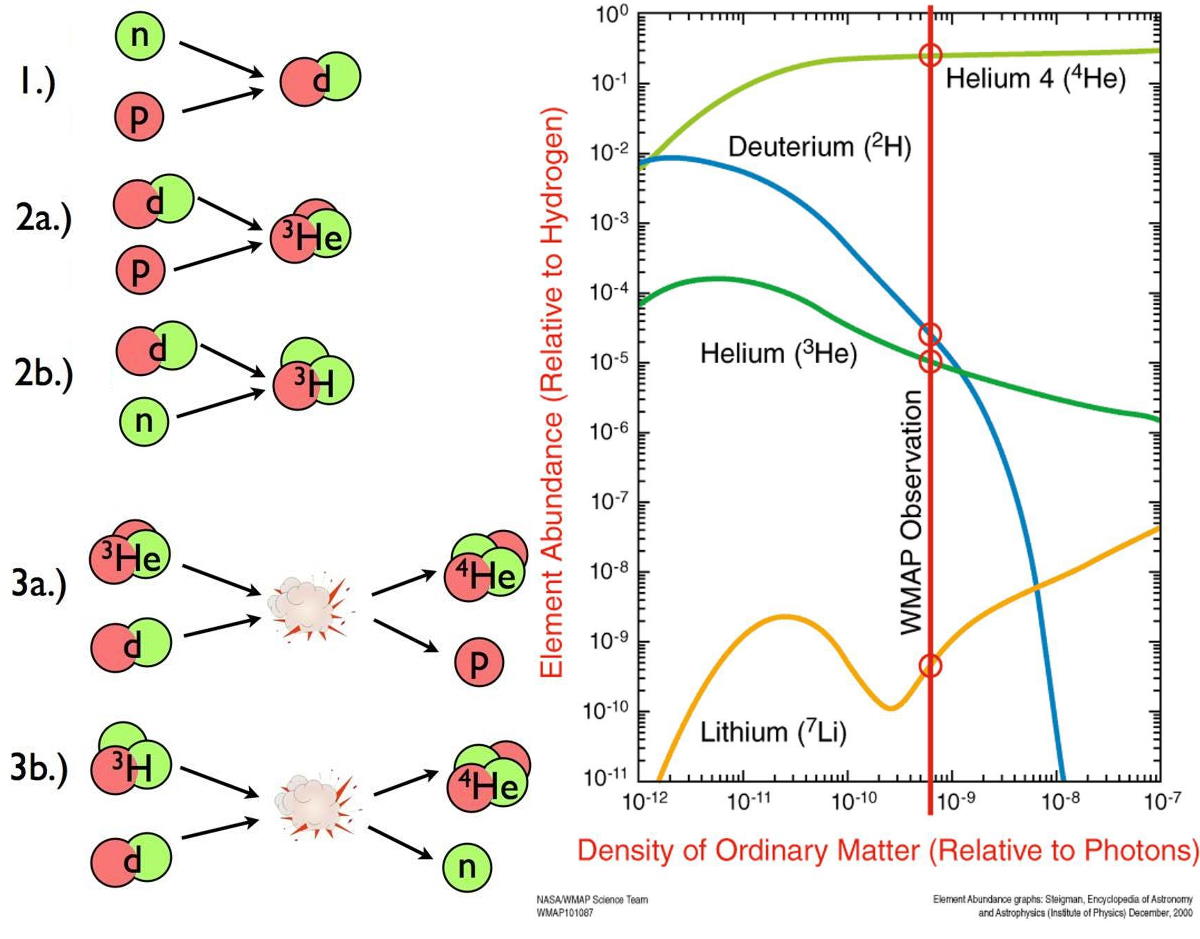
From the first constraint — that radiation would flow out of gravitationally bound structures — we can look to the young, early Universe and see how quickly various types of bound structures form. If whatever is responsible for this additional gravitational effect, over and above the normal (atom-based) matter our Universe possesses, were moving quickly compared to the speed of light at early times, it would flow out of any structures attempting to gravitationally collapse and form.
Clouds of gas would begin to collapse, but the outflow of fast-moving, energetic material would cause them to re-expand again. Small-scale structure would be suppressed compared to larger scales, as the expansion of the Universe will “cool” and slow this relativistic material by the time larger-scale structure can form, creating a scale-dependent suppression. And dark matter’s relative abundance to normal matter would appear to be higher now than in the early Universe, as at early times, only normal matter-based structure would form, but at late times, dark matter would gravitationally become bound to those structures.

This would appear as features in many places, including that it would alter the bumps-and-wiggles in the cosmic microwave background, it would create a strongly suppressed matter power spectrum on small cosmic scales, it would lead to a suppressed depth for the absorption lines imprinted on quasars and galaxies from intervening clouds of gas, and it would make the cosmic web “puffier” and less sharply feature-rich that it is.
The observations that we have set limits on how fast dark matter could have been moving at early times. In principle, it could have been:
- hot, where it moves quickly compared to light early on, and only became non-relativistic at relatively late times,
- warm, where it moves moderately fast compared to the speed of light early on, but becomes non-relativistic at intermediate times,
- or cold, where it always moved slowly compared to the speed of light, and was non-relativistic during all stages of structure formation.
Based on the observations we have, we can very strongly conclude that almost all of the Universe’s dark matter — something like 93% or more — must be cold, or at least “colder than hot-or-warm dark matter models permit,” from even very early times. Otherwise, we wouldn’t see the structures that we do with the properties they possess in the Universe today.

From the second constraint, which taught us that the relative abundance of normal matter to “whatever is causing this mismatch between gravity and our normal matter expectations” cannot change over time, we know that whatever the culprit for these effects are, it must behave the same at early times as compared to late times. That means it has to have the same equation of state as normal matter: it must dilute as the Universe’s volume expands, but it can neither have its wavelength stretch (and energy decrease) nor can it be a fundamentally one, two, or three-dimensional entity like a string, wall, or cosmic texture.
In other words, it must behave as matter does: cold, non-relativistic matter, even at early times. It cannot decay; it cannot change its equation-of-state; it cannot even be some form of “dark” radiation that behaves differently from the Standard Model’s photons. All species of energy that behave differently from how matter behaves in an expanding Universe are ruled out.
And finally, the third constraint — the abundances of the light elements — tell us that the properties of photons relative to baryons in the Universe cannot have changed much (other than the conversion of mass into photon energy from nuclear fusion in stars) over the entire history of the Universe. Whatever the solution to this “missing mass” puzzle is, this is one piece of the puzzle that cannot be altered.
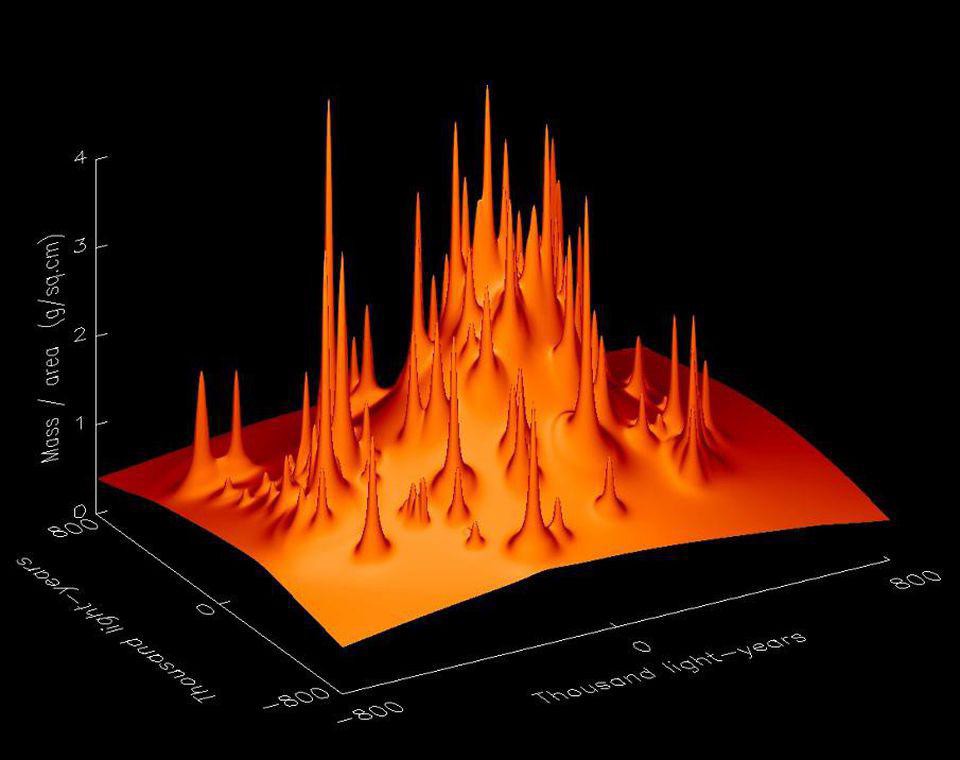
This is not, of course, an exhaustive discussion of what the possible solutions to the “missing mass” or “dark matter” puzzles can be, but it’s a good exploration of why we have such tight constraints on what it can and cannot be. We have very strong evidence from many independent lines of evidence — on many different cosmic scales and at many different cosmic times — that we understand the normal matter in our Universe very well, and how it interacts with photons, and with radiation in general.
We understand how and when structure forms, including glorious details on many different scales, and know that whatever the solution to the dark matter problem is, it’s behaving as though it:
- has always existed throughout all of cosmic history,
- has never interacted with photons or normal matter in any substantial, notable way,
- gravitates and evolves the same way that normal matter does,
- was never moving quickly compared to the speed of light,
- and forms cosmic structures on all scales and at all times as though it was born cold and never changed its equation-of-state.
From simply considering, “could dark matter actually be radiation, instead,” there’s a tremendous set of lessons the Universe can teach us about its very nature. The interplay of theory, observation, and simulations leads us to a remarkable conclusion: whatever the solution to the “missing mass” problem is, it sure looks a lot like cold dark matter, with very tight constraints on all of the possible alternatives.
Send in your Ask Ethan questions to startswithabang at gmail dot com!
